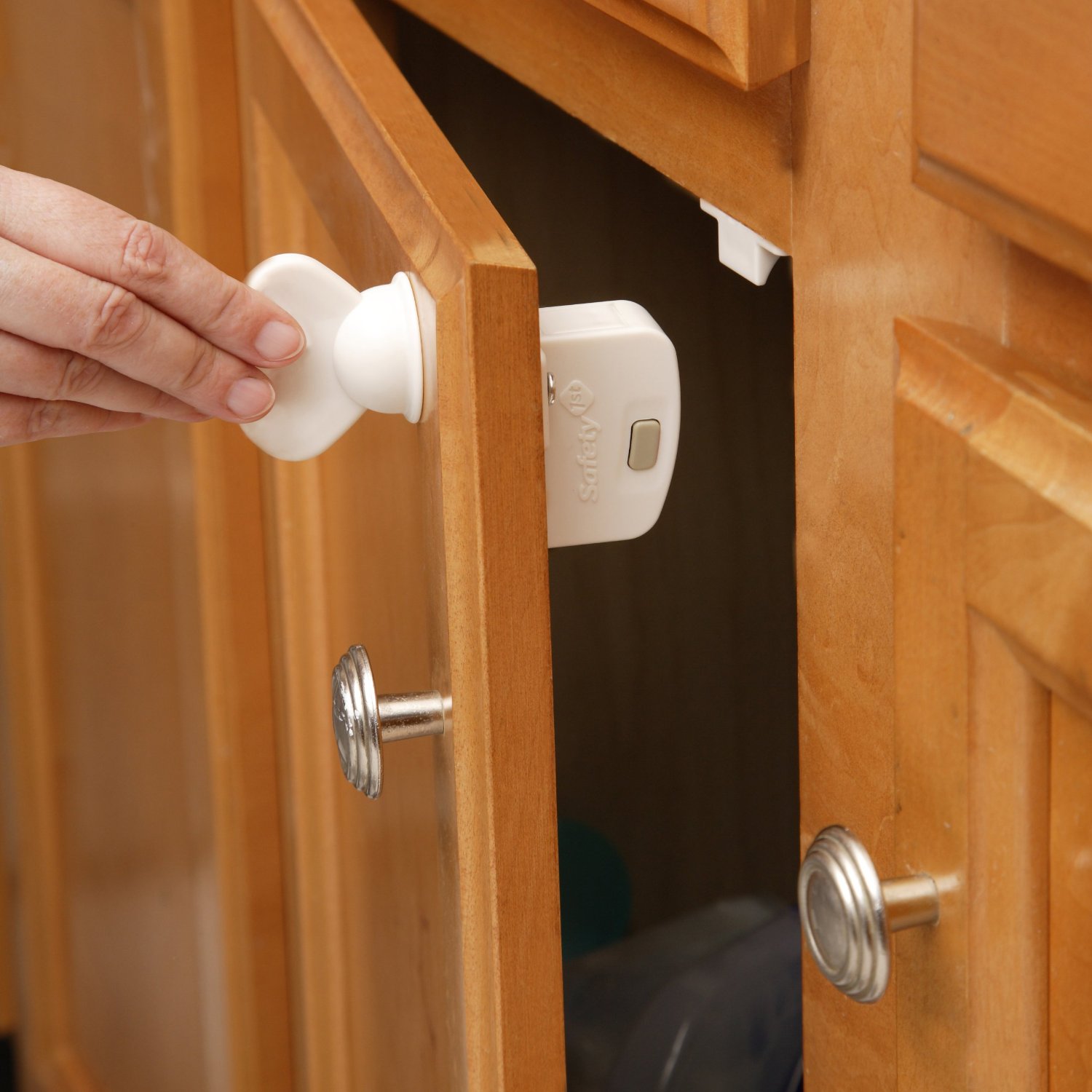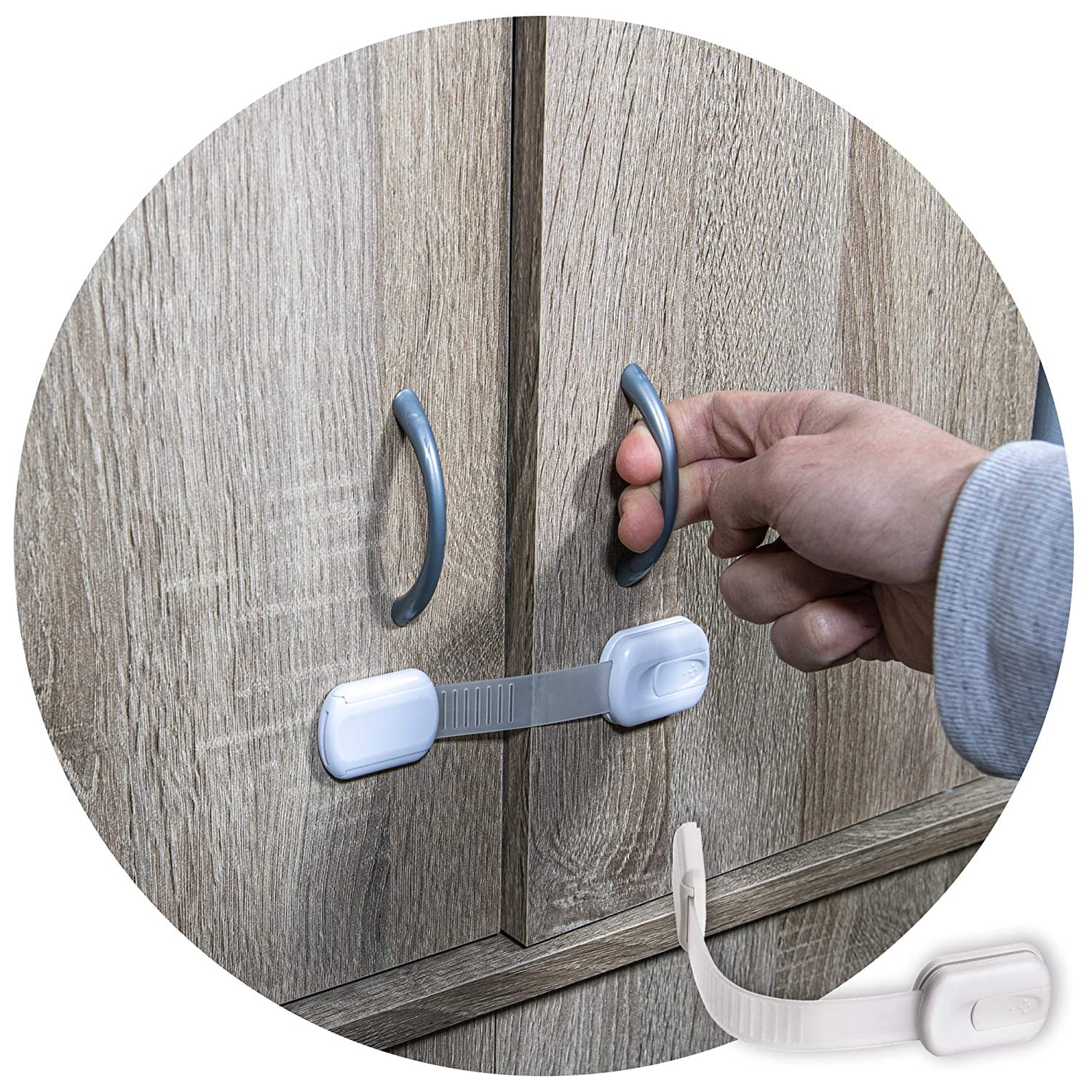Types of Child Locks for Cabinet Doors

Keeping curious little hands away from potentially dangerous items stored in cabinets is a priority for every parent. Child locks for cabinet doors offer a simple yet effective solution to prevent access to harmful substances or fragile objects.
Types of Child Locks
Child locks for cabinet doors come in a variety of designs, each with its own set of advantages and disadvantages.
- Magnetic Locks: Magnetic locks are a popular choice due to their ease of use. They consist of a magnet that attaches to the cabinet door and a corresponding plate that attaches to the cabinet frame. To open the door, you simply need to pull the magnet away from the plate. Magnetic locks are generally easy to install and remove, making them a good option for renters or those who don’t want to permanently alter their cabinets.
- Latches: Latches are another common type of child lock. They are typically installed on the inside of the cabinet door and require a key or a special tool to open. Latches offer a higher level of security than magnetic locks, as they are more difficult for children to bypass. They are often made of metal or plastic and come in a variety of styles.
- Straps: Straps are a simple and affordable option for securing cabinet doors. They are essentially a long piece of material that wraps around the cabinet door and fastens with a buckle or Velcro. Straps are easy to install and remove, but they may not be as secure as other types of locks.
Comparison of Child Lock Types
Here is a table comparing the features, pros, and cons of different child lock types:
| Type of Lock | Features | Pros | Cons |
|---|---|---|---|
| Magnetic Locks | Easy to use, easy to install and remove | Simple to operate, can be removed easily, affordable | Not as secure as other types, may not be suitable for heavy doors |
| Latches | Secure, can be used on various cabinet types | Highly secure, suitable for heavy doors, can be installed in various locations | May require a key or tool to open, more difficult to install than other types |
| Straps | Simple and affordable, easy to install and remove | Easy to use, inexpensive, can be adjusted to fit various door sizes | May not be as secure as other types, may be less durable than other types |
Choosing the Right Child Lock: Child Locks For Cabinet Doors

Choosing the right child lock for your cabinets is crucial to ensure your child’s safety. It involves considering various factors to find the most suitable option for your specific needs.
Factors to Consider
- Age of the Child: The age of your child plays a significant role in determining the type of child lock you need. For toddlers, a simple and easy-to-use lock is ideal, while older children may require a more complex lock that is harder to bypass.
- Type of Cabinet: The type of cabinet you are securing also affects the choice of child lock. For example, cabinets with heavy doors may require a stronger lock than those with lighter doors.
- Desired Level of Security: The level of security you require depends on the contents of the cabinet. For cabinets containing hazardous materials, a high-security lock is essential, while for cabinets containing less dangerous items, a basic lock may suffice.
Tips for Choosing the Right Child Lock
- Cabinets with Heavy Doors: For cabinets with heavy doors, consider a lock with a strong latch or a lock that uses a lever mechanism.
- Cabinets Containing Hazardous Materials: When securing cabinets containing hazardous materials, prioritize locks with high security features, such as multiple locking points or tamper-resistant designs.
- Cabinets Containing Fragile Items: For cabinets containing fragile items, choose locks that are gentle on the door and do not cause damage.
Decision-Making Flowchart
A flowchart can help parents navigate the decision-making process for choosing the right child lock.
Start:
* What is the age of your child?
* Toddler: Simple and easy-to-use lock.
* Older child: More complex lock that is harder to bypass.
* What type of cabinet are you securing?
* Heavy doors: Strong latch or lever mechanism lock.
* Light doors: Basic lock.
* What level of security do you require?
* Hazardous materials: High-security lock.
* Less dangerous items: Basic lock.
End:
Installation and Use of Child Locks

Installing child locks on cabinet doors is a simple yet crucial step in childproofing your home. These locks prevent curious little hands from accessing potentially dangerous items, ensuring a safer environment for your children.
Installing Magnetic Child Locks
Magnetic child locks are a popular choice due to their ease of installation and use. They typically consist of two parts: a magnet that attaches to the inside of the cabinet door and a corresponding plate that attaches to the cabinet frame. Here’s a step-by-step guide to installing magnetic child locks:
- Clean the surfaces: Before installing the locks, thoroughly clean the cabinet door and frame with a damp cloth to ensure a secure bond.
- Position the magnet: Place the magnet on the inside of the cabinet door, ensuring it’s positioned in a way that won’t interfere with the door’s opening and closing mechanism.
- Attach the magnet: Use the provided adhesive tape or screws to firmly attach the magnet to the door.
- Position the plate: Align the corresponding plate with the magnet on the cabinet frame, ensuring it’s positioned directly opposite the magnet.
- Attach the plate: Use the provided adhesive tape or screws to securely attach the plate to the frame.
Note: Some magnetic child locks come with a small key or a button that needs to be pressed to release the lock. Ensure you understand the mechanism and keep the key or button in a safe place where children cannot access it.
Installing Latch-Style Child Locks, Child locks for cabinet doors
Latch-style child locks are designed to prevent the cabinet door from opening completely. They are usually installed on the inside of the cabinet door and require a key or a button to release the lock.
- Locate the installation spot: Choose a location on the inside of the cabinet door that is accessible but not easily reached by children.
- Mark the drilling spot: Use a pencil to mark the spot where you will drill the holes for the lock.
- Drill the holes: Drill the holes according to the provided instructions, ensuring they are the correct size and depth for the lock.
- Install the lock: Insert the lock into the drilled holes and secure it with the provided screws or nuts.
- Test the lock: After installation, test the lock to ensure it works properly and the door can be opened and closed smoothly.
Note: Ensure the key or button for the latch-style lock is kept in a safe place where children cannot access it.
Installing Cabinet Door Strap Locks
Cabinet door strap locks are a simple and effective way to prevent children from opening cabinets. They are usually installed on the outside of the cabinet door and work by securing the door to the cabinet frame.
- Measure the door: Measure the width of the cabinet door to determine the appropriate length for the strap lock.
- Position the strap lock: Position the strap lock on the outside of the cabinet door, ensuring it is positioned in a way that won’t interfere with the door’s opening and closing mechanism.
- Attach the strap lock: Use the provided screws or adhesive tape to securely attach the strap lock to the door.
- Secure the strap: Wrap the strap around the cabinet frame and secure it using the buckle or latch provided.
Note: Ensure the strap lock is installed securely and the strap is adjusted to prevent the door from opening beyond a safe distance.
Child locks for cabinet doors are a lifesaver for parents with little ones! It’s amazing how those curious hands can get into everything. And speaking of cabinets, if you’re thinking about getting new ones, have you considered alder wood?
It’s known for its beautiful grain and durability, so it might be worth checking out is alder wood good for kitchen cabinets to see if it’s right for you. Whatever you choose, remember to keep those little explorers safe with those child locks!
Child locks on cabinet doors are a must-have for any household with little ones, especially when it comes to keeping those tempting medicines out of reach! But for a stylish and practical solution, consider a barn door medicine cabinet with mirror.
Not only does it look amazing, but it also offers easy access to your essentials while keeping everything secure behind a sliding door, ensuring peace of mind for both you and your curious little explorers.
